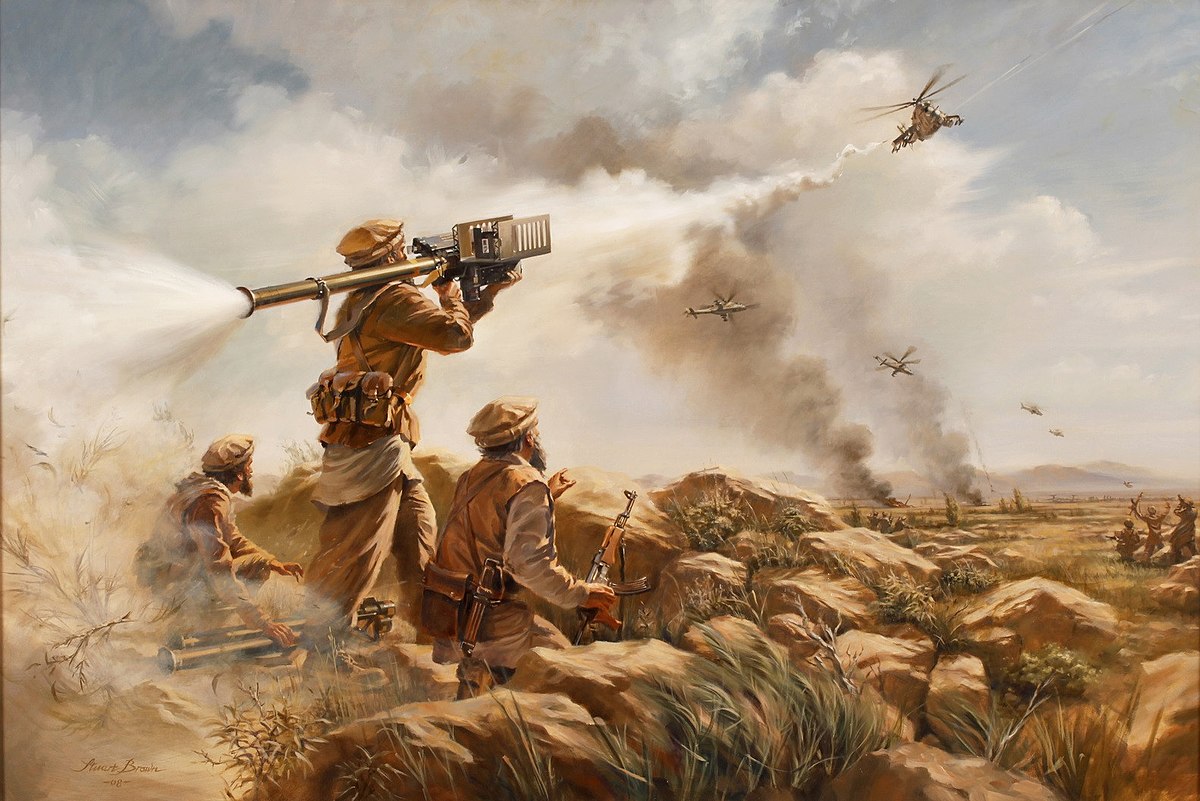
Soviet–Afghan War
AfghanistanThe Soviet–Afghan War was a protracted armed conflict fought in the Democratic Republic of Afghanistan from 1979 to 1989. It saw extensive fighting between the Soviet Union and the Afghan mujahideen (alongside smaller groups of anti-Soviet Maoists) after the former militarily intervened in, or launched an invasion of, Afghanistan to support the local pro-Soviet government that had been installed during Operation Storm-333.
While the mujahideen were backed by various countries and organizations, the majority of their support came from Pakistan, Saudi Arabia, the United States, the United Kingdom, China, and Iran; the American pro-mujahideen stance coincided with a sharp increase in bilateral hostilities with the Soviets during the Cold War.
Afghan insurgents began to receive general aid, financing, and military training in neighbouring Pakistan. The United States and the United Kingdom also provided an extensive amount of support to the mujahideen, routed through the Pakistani effort as part of Operation Cyclone. Heavy financing for the insurgents also came from China and the Arab monarchies of the Persian Gulf.
Soviet troops occupied Afghanistan's cities and all main arteries of communication, whereas the mujahideen waged guerrilla warfare in small groups across the 80% of the country that was not subject to uncontested Soviet control—almost exclusively comprising the rugged, mountainous terrain of the countryside. In addition to laying millions of landmines across Afghanistan, the Soviets used their aerial power to deal harshly with both rebels and civilians, levelling villages to deny safe haven to the mujahideen and destroying vital irrigation ditches.
The Soviet government had initially planned to swiftly secure Afghanistan's towns and road networks, stabilize the PDPA government under loyalist Karmal, and withdraw all of their military forces in a span of six months to one year. However, they were met with fierce resistance from Afghan guerrillas and experienced great operational difficulties on Afghanistan's mountainous terrain. By the mid-1980s, the Soviet military presence in Afghanistan had increased to approximately 115,000 troops, and fighting across the country intensified; the complication of the war effort gradually inflicted a high cost on the Soviet Union as military, economic, and political resources became increasingly exhausted.
By mid-1987, reformist Soviet leader Mikhail Gorbachev announced that the Soviet military would begin a complete withdrawal from Afghanistan, following a series of meetings with the Afghan government that outlined a policy of "National Reconciliation" for the country. The final wave of disengagement was initiated on 15 May 1988, and on 15 February 1989, the last Soviet military column occupying Afghanistan crossed into the Uzbek SSR.
Due to the length of the Soviet–Afghan War, it has sometimes been referred to as the "Soviet Union's Vietnam War" or as the "Bear Trap" by sources from the Western world. It has left a mixed legacy in the post-Soviet countries as well as in Afghanistan. Additionally, American support for the mujahideen in Afghanistan during the conflict is thought to have contributed to a "blowback" of unintended consequences against American interests (e.g., the September 11 attacks), which ultimately led to the United States' War in Afghanistan from 2001 until 2021.
